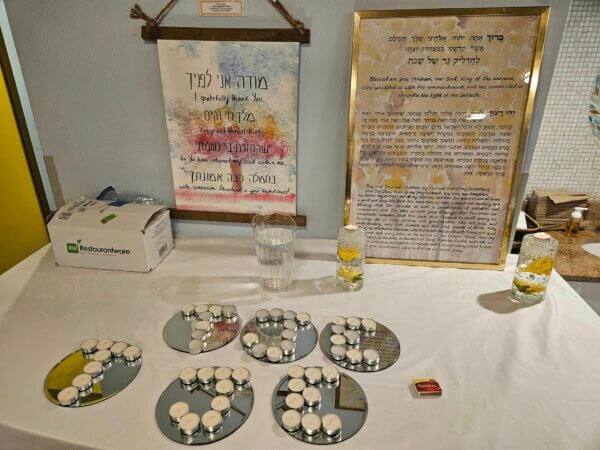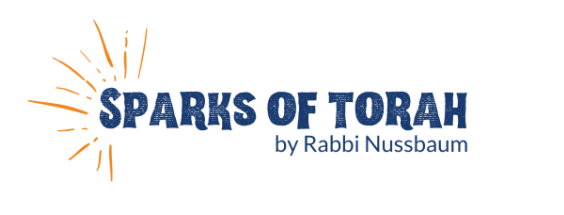VOLUME 54 NUMBER 7
February 5th, 2011
1 Adar 1, 5771
The Templemobile
By Rabbi Raphael Leban
I find it strange that when the guard at airport security asks what me what my tefillin are, I tell him phylacteries. Does this help him? It’s just an English word of Greek etymology meaning the little, black, leather boxes of scrolls that Jews put on their arms. If he didn’t know what tefillin are, the word phylacteries won’t help him. Maybe I’m hoping he’s a very erudite, multi-cultural, Greek guard.
The same is true for the word Tabernacle. It’s basically just a word in another language for the Mishkan, the small, movable tent that we built in the desert according to G-d’s detailed instructions. Try explaining that one to airport security.
Instead of ‘Tabernacle,’ I personally prefer a term for the Mishkan coined by a dear friend of mine, the Templemobile. This is a term that anyone can understand, Greek or not, and it has the added benefit of being very accurate.
Nachmonides, in his well-known commentary on the Torah, explains that the Mishkan was the extension of Mount Sinai, the on-going experience of the Giving of the Torah, on wheels. Just as the Divine Presence rested on the mountain during the recitation of the Ten Comandments, so to it rested in the Mishkan. Just as we were arrayed around the mountain, we were arrayed around the Mishkan. And just as the Mount Sinai experience was the source of Torah in the world, so too, the Mishkan served as the continuing source of Torah in the world.
When we left Mount Sinai with the Mishkan, it was like we took Mount Sinai with us. The event of the Giving of the Torah stayed with us as we entered the Land of Israel. It lasted for centuries until we built the Temple in Jerusalem. It then lasted for centuries more until it was destroyed by the Babylonians. For all those centuries, the experience of Mount Sinai, the most important moment in our history, was present in that place.
As we read about the Mishkan for four out of the next five parshas, let’s remember what it’s really about. The Templemobile—may it always be with us.
Renewal
By Rabbi Dovid Nussbaum
The life of a Jew is one of ongoing renewal. This Shabbos is the first day of the month of Adar I. Since this is a leap year, there is an Adar II. Rosh Chodesh, the first day of a month, is a time of renewal. The month of Adar in particular is a period of rejuvenation. The word Adar itself is rooted in the Hebrew word ‘dirah’ which means to dwell. During this month we invite Hashem to reside with us as we discuss the construction of the Mishkan.
The Mishkan was the mobile Beis Hamikdash which traveled with the Jews during their sojourn in the desert and remained with them for many years until the permanent Beis Hamikdash was built. How does Hashem’s presence amongst us promote renewal? The basic answer to that question is that Hashem doesn’t accept mediocrity! If our religious observance is hum-drum and we continue sleepily on our merry way, Hashem sends us a wake-up call.
However, the presence of the Beis Hamikdash or its mobile predecessor actually provided much more intrinsic spiritual motivation. We were obligated to bring two daily sacrifices called the Korban Tamid, the daily offering. The Talmud explains that the morning sacrifice atoned for the sins committed during the evening of the previous day while the afternoon offering would atone for the sins that occurred during that day. What an incredible opportunity for introspection! Each person was prompted to examine his deeds on a daily basis and sincerely attempt to improve his behavior.
Furthermore, during this time of year, money was collected from the entire populace living in Israel in order to purchase the animals that would be used for the sacrifices. In this way, the entire nation would be represented by every single offering brought. Every day was a time for repentance and every single person within the Land of Israel was intrinsically connected to this effort to enhance and refine our nation. Day in and day out, Hashem ‘polished us’ through the Beis Hamikdash. Although we lack that holy abode today, the concept of daily assessment and perfecting ourselves should not be lost and we must strive to recapture the glory of those days.
The Mishkan was built through donations collected from the Jewish people. Rashi explains that the word donation in Hebrew, ‘nedava,’ connotes that one is displaying his good will in assisting a worthy cause such as the construction of the Mishkan. Certainly, such practices promote self-scrutiny and the desire to constantly engage in other commendable endeavors. We know that the body recharges itself physically when we sleep and abstain from work. However, the Talmud teaches us that our spiritual body renews itself when we are involved in duties of the heart, activities that invigorate and refresh our connection to Hashem and the Torah. As we learn the portions of the Torah dealing with the Mishkan, let us reexamine our lives and determine if we can elevate ourselves in a more meaningful and significant manner.
Byte for Shabbos
When G-d commanded Moshe to build the Tabernacle in order for his presence to reside within the Jewish nation, Moshe trembled. He wondered how we could possibly build an abode to house G-d, who is greater then the entire universe? G-d responded that He does not expect them to accommodate Him based upon what G-d is, rather He will be satisfied if we do the utmost and best that we can.
CHOFETZ CHAIM


